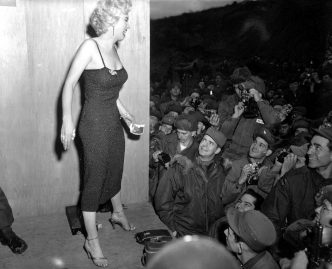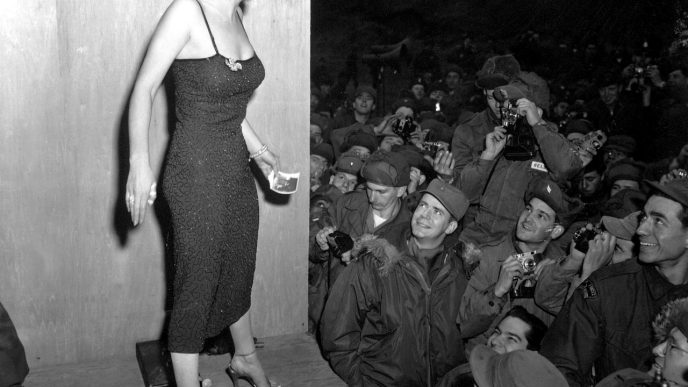In the pantheon of Hollywood’s Golden Age, Hedy Lamarr was an icon of beauty and glamour, an actress whose striking features defined her as “the most beautiful woman in the world.” She graced the screen in classics like Algiers and Cecil B. DeMille’s epic Samson and Delilah, embodying the quintessential femme fatale. But behind the celluloid mystique was a brilliant, restless mind that Hollywood never knew how to cultivate.
Lamarr was not just a star; she was a self-taught inventor who, in her spare time, co-developed a revolutionary technology that would one day form the bedrock of modern wireless communication, including Wi-Fi, GPS, and Bluetooth. Her life was a study in contrasts—a woman celebrated for her face but driven by her intellect, a trailblazer whose most significant contribution to the world was ignored for decades because society could not see past her beauty.
From Vienna to Hollywood: An Escape to Stardom
Born Hedwig Eva Kiesler in 1914 to a prosperous Jewish family in Vienna, Lamarr’s curiosity was nurtured from a young age by her father, a bank director who would explain the inner workings of machines to her on their walks. At just five years old, she was taking apart and reassembling her music box to understand its mechanics. However, her intellect was quickly overshadowed by her beauty. Discovered by director Max Reinhardt at sixteen, she began an acting career that brought her notoriety for her role in the controversial 1933 film Ecstasy.
Her early fame led to a disastrous marriage with Fritz Mandl, a wealthy Austrian munitions dealer who was possessive and controlling. Lamarr later described the marriage as imprisonment, saying, “I was like a doll… some object of art which had to be guarded—and imprisoned—having no mind, no life of its own.” Yet, it was during this time, forced to attend dinners with Mandl’s business partners, some of whom were associated with the Nazi party, that she absorbed critical information about advanced weaponry and military technology. In 1937, she orchestrated a daring escape, fleeing to London where she met MGM studio head Louis B. Mayer. He gave her a new name—Hedy Lamarr—and a ticket to Hollywood.
The Inventor’s Workshop: A Hobby Between Takes
In Hollywood, Lamarr was an instant sensation, but she found the studio system intellectually stifling. To combat the boredom, she pursued inventing as a hobby. Her inventive spirit was encouraged by her friend and fellow innovator, the eccentric aviator Howard Hughes. Hughes provided her with a small set of equipment for her on-set trailer, allowing her to work on ideas between takes. Inspired by Hughes’s desire to build faster planes for the U.S. military, she studied books on the fastest birds and fish, sketching a new wing design that combined the best features of both. Upon seeing it, Hughes reportedly told her, “You’re a genius.”
Her mind was constantly at work. She developed a concept for an improved stoplight and a tablet that would dissolve in water to create a carbonated drink. But her most significant invention was born from a desire to contribute to the war effort. Outraged by German U-boats sinking passenger ships in the Atlantic, Lamarr was determined to find a way to stop them.
The Secret Communication System: A Symphony of Innovation
Lamarr understood that a key vulnerability of radio-controlled torpedoes was that their guidance signals could be easily detected and jammed by the enemy. She conceived of a brilliant solution: a “frequency-hopping” system where the radio signal guiding the torpedo would jump rapidly and randomly between different frequencies, making it impossible for an enemy to block.
Lacking the technical expertise to build a working model, she collaborated with an unlikely partner: the avant-garde composer and pianist George Antheil. Together, they devised a mechanism inspired by player pianos. By using two synchronized paper rolls, punched with a matching random pattern across 88 “keys,” they could control both the transmitter and receiver to hop between 88 different frequencies in perfect unison. In August 1942, they were granted U.S. Patent Number 2,292,387 for their “Secret Communication System,” which they promptly donated to the U.S. Navy, free of charge, to help the war effort.
A Legacy Rediscovered
The Navy, however, dismissed the invention as impractical and told Lamarr she could better serve the war effort by using her celebrity status to sell war bonds. Her groundbreaking idea was shelved and forgotten. It wasn’t until the 1950s that the Navy rediscovered the patent and began using the technology to create sonobuoys for detecting submarines. By 1962, during the Cuban Missile Crisis, U.S. ships were outfitted with frequency-hopping devices based on her design.
After the patent was declassified in the mid-1980s, the technology was adopted by the private sector, forming the foundation for spread-spectrum communication. Today, every time we use Wi-Fi, Bluetooth, or a GPS system, we are using a direct descendant of Hedy Lamarr’s invention. Despite her contribution being valued at an estimated $30 billion, she never received any financial compensation. Recognition finally came late in her life. In 1997, she received an award from the Electronic Frontier Foundation, and in 2014, she was posthumously inducted into the National Inventors Hall of Fame.
Conclusion: More Than a Pretty Face
Hedy Lamarr’s life was a testament to her own self-description as a “true enemy of convention.” She was a woman who refused to be defined by a single dimension, navigating a world that celebrated her beauty while dismissing her intellect. While Hollywood immortalized her as a screen siren, her most profound legacy was forged in secret, born from a brilliant mind that saw the world in a way few others could. Her story is a powerful reminder that genius can be found in the most unexpected places, and her invention, once dismissed, now quietly powers the interconnected world we live in today.

Dario Loce is the founder and editor of Celebrimous. He is a lifelong film enthusiast and the author of several locally-published books on cinema history and analysis. His passion is deconstructing the “how” and “why” of filmmaking, from the director’s vision to the editor’s cut. When not lost in a classic film, he’s usually walking through the city, replaying scenes in his mind like unfinished stories.













